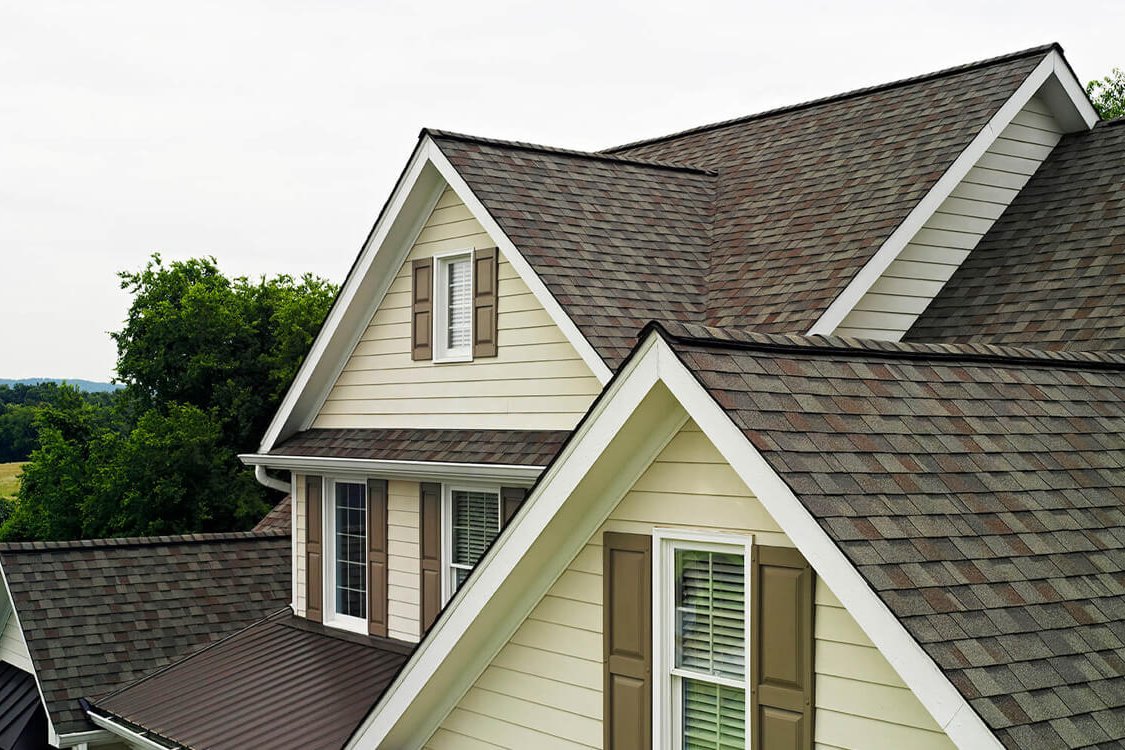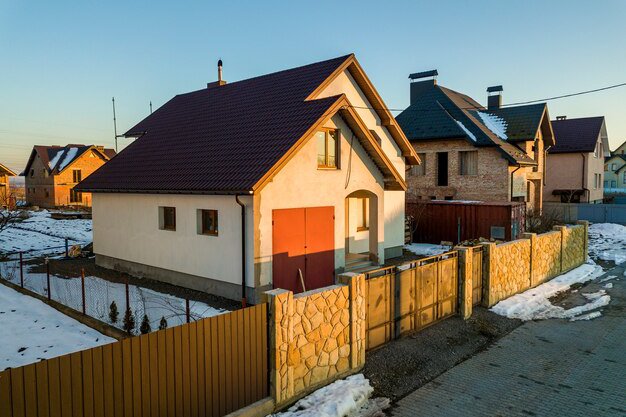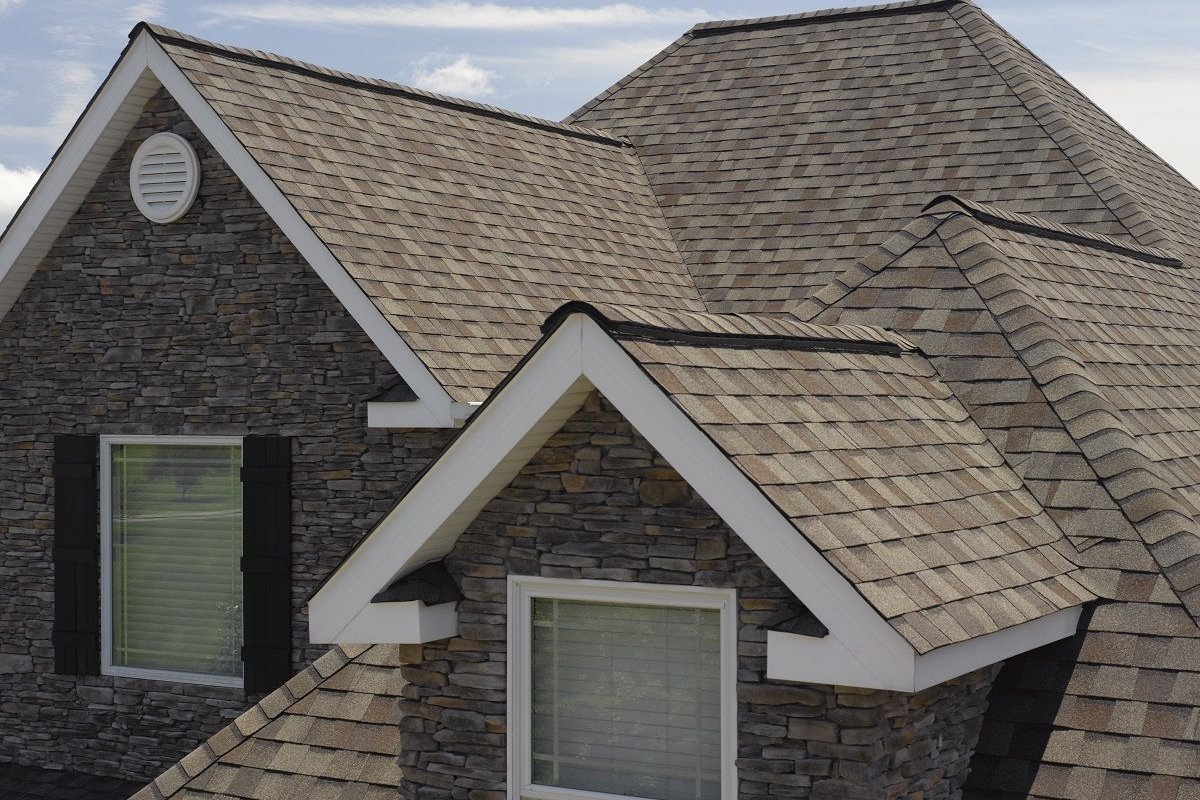Choosing the Best Roof Decking: Plywood vs. OSB for Lincoln City, Oregon Homes
When considering a roof replacement or repair in Lincoln City, Oregon, homeowners often focus on the visible layers like shingles or metal panels. However, a crucial component beneath the surface, the roof decking (also known as sheathing), plays a vital role in the structural integrity and longevity of the entire roof system. The decking provides the solid base to which roofing materials and underlayment are attached and helps transfer the load of snow, wind, and even the roofing materials themselves down to the supporting structure of the house. In the coastal climate of Lincoln City, where moisture can be a persistent challenge, selecting the right decking material is paramount. The two most common options are plywood and Oriented Strand Board (OSB), each with distinct characteristics that impact performance over time.
Understanding the Foundation: What is Roof Decking?
Roof decking serves as the structural skin of your roof, bridging the gap between the rafters or trusses and the roofing materials. It's the layer you walk on during installation and the surface that receives the thousands of nails or fasteners required to secure shingles, felt paper, and other components. Beyond providing a fastening surface, the decking contributes significantly to the roof's shear strength, helping the structure resist lateral forces like wind. A properly installed and robust decking material is essential for preventing roof sag, providing adequate support for heavy roofing materials, and ensuring fasteners hold securely, preventing blow-offs during high winds.
Plywood vs. OSB: A Detailed Comparison
Plywood and OSB are both engineered wood products commonly used for structural sheathing, including roof decking. While they serve the same function, their composition and performance characteristics differ significantly, impacting their suitability for various applications and environments, especially in humid or wet conditions.
Plywood: Manufacturing and Properties
Plywood is manufactured by gluing together thin layers, or veneers, of wood in alternating directions. This cross-graining technique distributes the wood's strength across the panel, making it dimensionally stable and strong in both directions. The grade of plywood is indicated by letters (A, B, C, D) for the face and back veneers, and often includes a rating for the glue type (Exterior or Interior) and specific use (Construction, e.g., C-D Exterior or CDX). CDX plywood is a common choice for roofing, featuring C-grade face and D-grade back veneers bonded with exterior-grade adhesive designed to withstand moisture exposure during construction.
Advantages of Plywood:
- Dimensional Stability: Plywood is less prone to expansion and contraction due to changes in moisture or temperature compared to OSB.
- Moisture Resistance (for Exterior Grades): Exterior-grade glues in CDX plywood offer better resistance to temporary water exposure during installation or from minor leaks compared to standard OSB. While not waterproof, it handles moisture better before drying out.
- Strength and Stiffness: The cross-laminated structure provides excellent strength and stiffness, contributing to the roof's structural integrity.
- Fastener Retention: Plywood generally holds nails and screws well, providing a secure base for roofing materials.
- Less Edge Swelling: While it can swell, plywood is less susceptible to the significant edge swelling that can plague OSB when exposed to moisture.
Disadvantages of Plywood:
- Cost: Plywood, especially higher grades or CDX, is often more expensive per sheet than OSB.
- Potential for Delamination: If repeatedly exposed to significant moisture over time, the layers of plywood can separate, a process called delamination.
OSB: Manufacturing and Properties
Oriented Strand Board (OSB) is made from rectangular wood strands or flakes that are arranged in specific orientations (typically cross-oriented layers) and bonded together with waterproof resins under heat and pressure. It was developed as a lower-cost alternative to plywood and has become widely used in construction.
Advantages of OSB:
- Cost-Effectiveness: OSB is typically less expensive than plywood, making it a budget-friendly option for many builders and homeowners.
- Consistency: OSB panels tend to be more uniform in density and strength than plywood, which can have voids or knots in lower grades.
- Availability: OSB is widely available and comes in large panel sizes, which can sometimes speed up installation.
Disadvantages of OSB:
- Moisture Sensitivity: While manufactured with waterproof resins, OSB is significantly more susceptible to swelling, particularly at the edges, when exposed to moisture. This swelling can persist even after drying, leading to uneven surfaces that telegraph through shingles and can compromise the integrity of the roof system.
- Less Dimensional Stability: OSB expands and contracts more than plywood with changes in humidity and temperature, requiring precise spacing during installation to prevent buckling.
- Fastener Retention (Variable): Fastener retention can be less reliable in OSB compared to plywood, especially near edges or if the material becomes damp or swollen.
- Weight: OSB can sometimes be heavier than plywood panels of the same size and thickness.
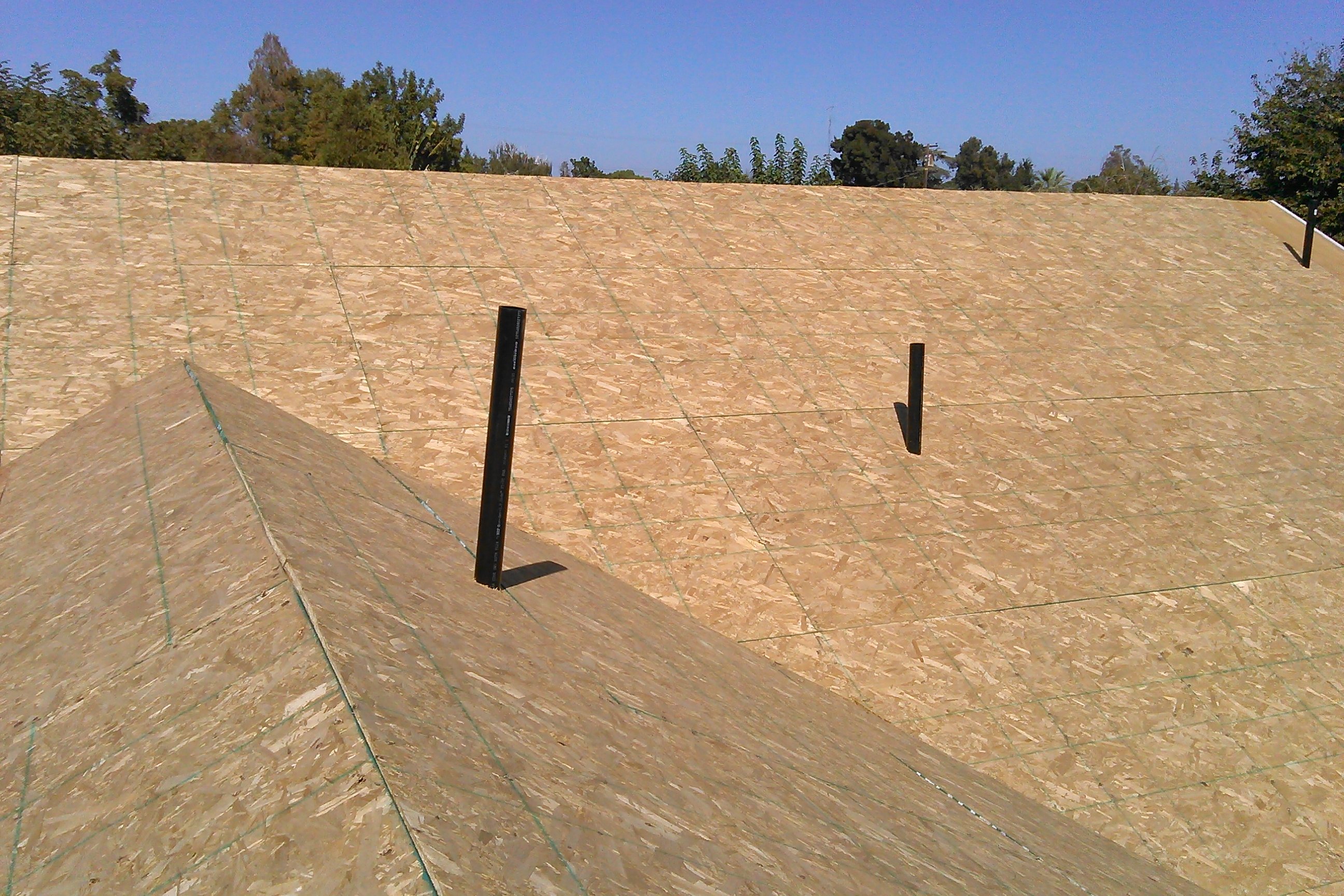
OSB roof decking installed before underlayment. Note the visible strands.
Performance Comparison: Durability and Moisture Handling
For roofing applications, especially in a climate like Lincoln City, Oregon, where moisture exposure from rain, fog, and humidity is common, the differences in how plywood and OSB handle water are critical.
When OSB gets wet, the wood strands absorb moisture and swell. This swelling is often most pronounced along the edges of the panels, creating raised "humps" or ridges. Even after the OSB dries, this swelling may not fully subside, resulting in a permanently uneven surface. This unevenness can cause shingles installed over it to lay improperly, leading to premature wear, cracking, and reduced wind resistance. Furthermore, repeated wetting and drying cycles can degrade the resin binders in OSB, reducing its structural integrity over time.
Plywood, particularly CDX grade with its exterior glue, is more resilient to temporary moisture exposure. While it can still swell if saturated, the layered structure and strong adhesives resist delamination under typical roofing conditions. Swelling in plywood is generally more uniform across the panel and less pronounced at the edges compared to OSB. This means that even if CDX plywood gets wet during a rain shower during installation, it is more likely to dry out and return to its original dimensions without significant, permanent distortion.
In terms of long-term durability under a functioning roof system, both materials can perform adequately if kept dry. However, the reality is that roofs can experience minor leaks, condensation issues from poor ventilation, or temporary exposure during repairs or installation. In these scenarios, the superior moisture handling of CDX plywood offers a significant advantage in maintaining a flat, stable surface for the life of the roofing material.
| Feature | Plywood (CDX) | OSB (Standard Roofing Grade) |
|---|---|---|
| Composition | Cross-laminated wood veneers | Compressed wood strands/flakes |
| Manufacturing | Glued layers of veneer | Glued and pressed strands |
| Dimensional Stability | High; less expansion/contraction | Lower; more expansion/contraction |
| Moisture Handling | Good resistance to temporary exposure; resists delamination; less edge swelling | Sensitive to moisture; significant edge swelling; slower drying |
| Durability (Moisture) | More resilient | Less resilient; prone to permanent distortion |
| Fastener Retention | Generally excellent | Good, but can be compromised by moisture/swelling |
| Cost | Higher | Lower |
| Weight | Generally Lighter | Can be heavier |
| Surface Uniformity | Very smooth and flat | Can have texture; prone to edge swelling causing unevenness |
Why CDX Plywood is Often Recommended
Given the performance differences, especially regarding moisture, CDX (C-D Exterior) plywood is frequently recommended as the superior choice for roof decking, particularly in regions prone to humidity or rainfall, such as coastal Oregon.
The "CD" refers to the grade of the face and back veneers – C-grade allows for knots and repairs, D-grade is the lowest standard utility grade, allowing larger knots and imperfections. The crucial "X" signifies that the panel is bonded with exterior-grade glue. This adhesive is designed to withstand exposure to the elements for extended periods, making the panel suitable for applications where it might get wet during construction or experience occasional moisture penetration over its lifespan.
While standard OSB is manufactured with waterproof resins, the very nature of its composition – compressed wood strands – makes it act more like a sponge than the layered structure of plywood. When water penetrates OSB, it is absorbed into the individual strands, causing them to swell. This swelling is often uneven and particularly problematic at the exposed edges where the strands are cut.
Key Advantages of CDX Plywood Over OSB for Roofing:
- Superior Moisture Management: The layered structure and exterior glue allow CDX plywood to handle moisture exposure better. It swells less, dries more predictably, and is less likely to suffer permanent distortion compared to OSB. This is critical for preventing the telegraphing of panel edges through the roofing material, which can happen with swollen OSB and lead to premature shingle failure.
- Greater Stability: CDX plywood maintains its shape better under varying temperature and humidity conditions, reducing the risk of buckling or warping after installation.
- Proven Performance: Plywood has a long history as a reliable roofing substrate, and CDX is a widely accepted standard for this application.
- Better Fastener Holding Power: The cross-laminated veneers provide a more robust material for fasteners to grip, ensuring roofing materials stay securely attached, which is vital for wind resistance.
While OSB is a viable and less expensive option, especially in drier climates or for projects where budget is the absolute primary driver, the added cost of CDX plywood is often seen as a worthwhile investment in the long-term durability and performance of the roof system, particularly in a location like Lincoln City where moisture is a constant consideration. A few dollars saved per sheet on decking can translate into significant issues down the road if the decking swells and compromises the roofing material above it.
Installation Best Practices for Decking
Proper installation is just as critical as material selection for the performance of roof decking. Even the best CDX plywood won't perform correctly if installed improperly.
- Proper Thickness: Ensure the decking thickness is appropriate for the span of the rafters or trusses and the weight of the intended roofing material. Common thicknesses for residential roofs are 1/2 inch or 5/8 inch, but this should be determined by local building codes and engineering requirements.
- Panel Orientation: Decking panels should generally be installed with the long dimension perpendicular to the rafters or trusses. The grade stamp should be visible and facing up during installation.
- Spacing: This is crucial, especially for OSB. A minimum 1/8 inch gap should be left between the edges and ends of panels to allow for expansion due to moisture changes. This prevents buckling. Plywood also benefits from small gaps (often specified as 1/16 inch), although it expands less than OSB. H-clips are often used along unsupported panel edges between rafters to provide edge support and maintain spacing.
- Fasteners: Use the correct type and length of nails or screws as specified by local building codes and the roofing material manufacturer. Fasteners must penetrate the rafters/trusses adequately for proper hold. Standard practice involves nailing along the edges and in the field of the panel at specified intervals.
- Staggered Joints: End joints of panels should be staggered from one row to the next to maintain structural continuity.
- Ventilation: Ensure the attic or space below the decking is properly ventilated. Adequate intake (soffit) and exhaust (ridge or box) vents prevent moisture buildup from condensation, which can saturate the underside of the decking over time, leading to degradation of either plywood or OSB.
- Immediate Covering: Once decking is installed, it should be covered with roof underlayment as soon as possible to protect it from rain and sun exposure. Prolonged exposure to weather can damage the decking before the final roofing material is installed.
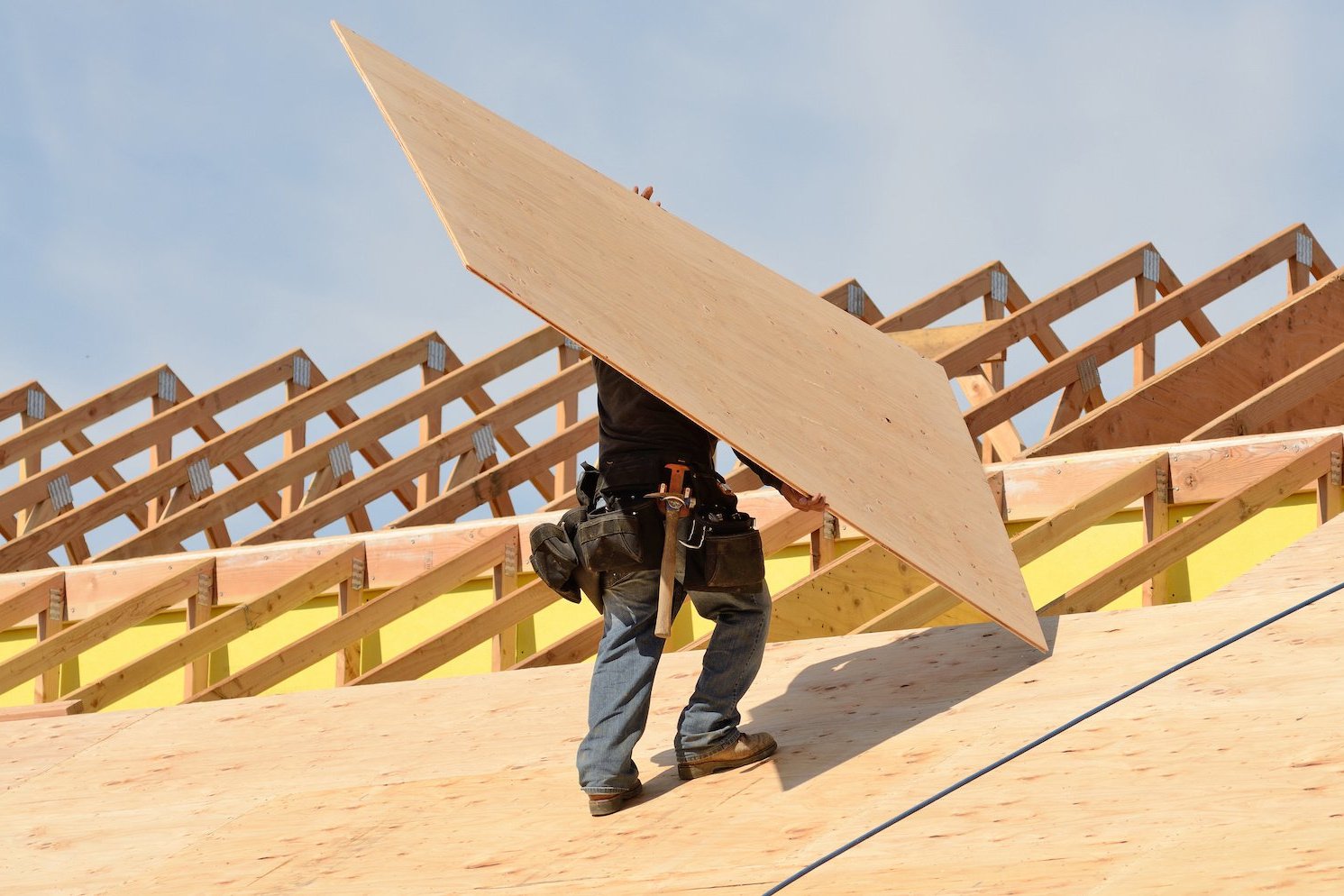
A roofer installing plywood decking panels, a critical step in roof construction.
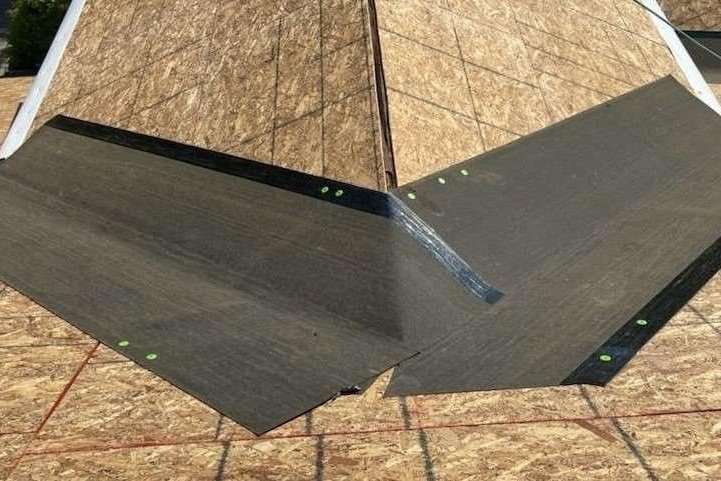
Ice and water shield installed over decking, protecting it from moisture.
Signs Your Roof Decking Needs Attention
While decking is hidden, signs of its failure or deterioration can become apparent from both inside and outside the house. Recognizing these signs early can prevent more significant structural damage and costly repairs.
- Sagging or Uneven Roof Surface: If you notice dips or waves in your roofline, it could indicate that the underlying decking is weakening or failing, potentially due to moisture damage, improper spacing, or simply age.
- Water Stains on Ceilings or Walls: Leaks are a primary indicator of roof system failure, and water often saturates the decking before dripping into the living space. Water stains in the attic or on interior ceilings directly below the roof are red flags.
- Mold or Mildew Growth: Visible mold or mildew in the attic, particularly on the underside of the roof sheathing, is a clear sign of excessive moisture and potential decking degradation.
- Soft Spots on the Roof: If you or a roofing professional walks on the roof and feels soft or spongy areas, it indicates that the decking has lost its structural integrity, likely due to rot caused by prolonged moisture exposure.
- Fastener Issues: If shingles are lifting or detaching easily, it might not just be a shingle problem; the nails or staples may no longer be holding securely in deteriorated decking.
- Visible Deterioration in the Attic: Inspecting the underside of the decking from the attic can reveal issues like water stains, dark spots (indicating mold/mildew), delamination (in plywood), or swelling (in OSB).
If you observe any of these signs, it's crucial to have your roof system, including the decking, inspected by a professional roofer. Ignoring these warnings can lead to widespread rot, structural damage, and eventually, catastrophic roof failure.
For urgent situations like active leaks or suspected storm damage where immediate professional inspection is needed, don't delay.
Book a roofing appointment
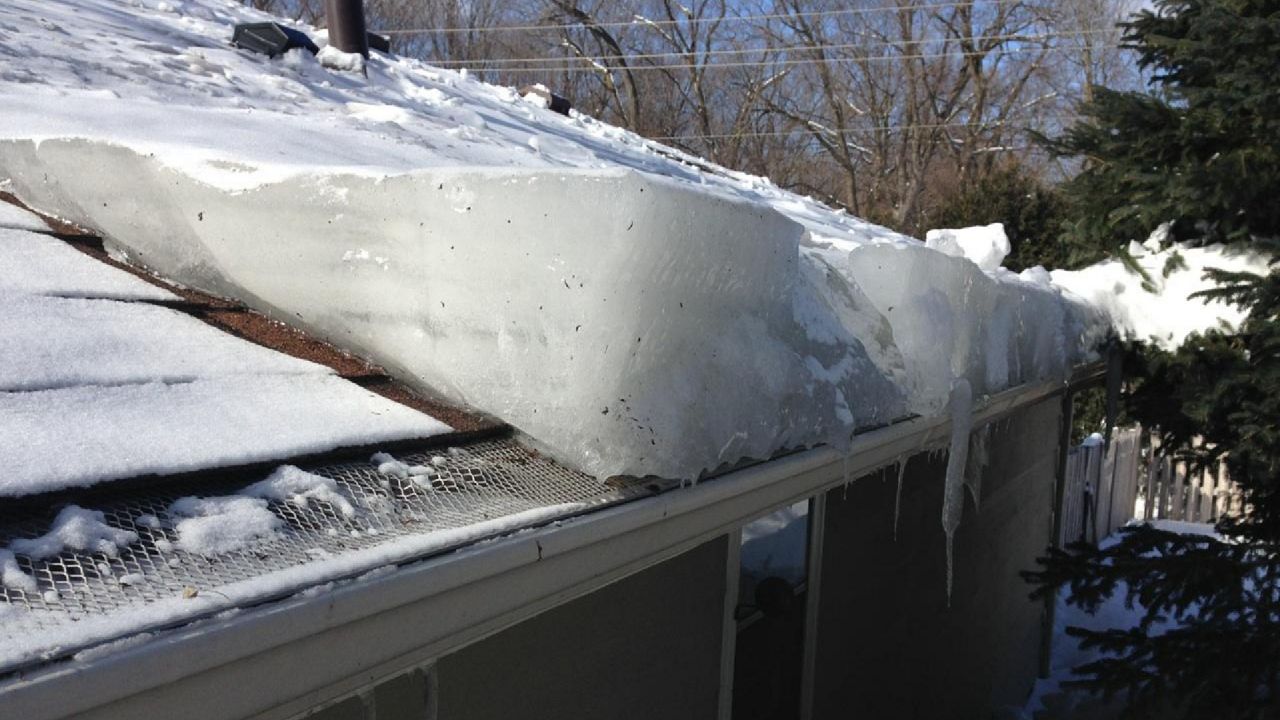
Severe moisture issues, such as those causing ice dams, can saturate and damage roof decking.
Planning Your Roof Decking Project
Whether you're planning a full roof replacement or addressing a specific issue that requires decking repair, thoughtful planning is essential.
- Assess the Condition: Determine the extent of the decking issues. Is it localized damage from a leak, or is it widespread deterioration requiring a full replacement? A professional inspection can provide this assessment.
- Choose the Right Material: Based on the assessment, your budget, and local climate considerations (like the moisture in Lincoln City), decide whether to use CDX plywood or OSB for the replacement or repair areas. Consulting with your roofer on their recommendation is advisable.
- Estimate Material Needs: Calculate the square footage of the roof area requiring new decking. Remember to account for waste and potential damage discovered during tear-off.
- Budgeting: Factor in the cost of the decking material itself, fasteners, any necessary H-clips, and the labor for installation. Keep in mind that replacing damaged decking is an additional cost on top of the roofing material and installation labor.
To get a preliminary understanding of potential costs for your planned roofing project, including materials like decking, you can utilize our convenient service.
Get your free instant roof estimate
This service can provide a quick estimate based on satellite imagery and local data, helping you with your initial budget planning for non-urgent projects like planned roof replacements or evaluations.
Finding Qualified Professionals
The quality of roof decking installation significantly impacts its performance and lifespan. Choosing an experienced, reputable roofing contractor is vital. A skilled roofer will:
- Correctly assess the condition of your existing decking.
- Recommend the appropriate decking material based on your needs and local conditions.
- Install the decking to meet or exceed building code requirements, including proper spacing and fastening.
- Ensure the decking is adequately protected from moisture during installation.
- Properly integrate the decking with other roof components like underlayment, flashing, and ventilation.
Finding a contractor familiar with the specific challenges of roofing in the Lincoln City area can be beneficial, as they will understand local building codes, weather patterns, and common issues.
Proper installation of components like drip edge is essential for protecting the decking edges from moisture.
A drip edge installed along a roofline, preventing water damage
Properly installed drip edge protects the edges of the roof decking from water runoff.
Ensuring a Solid Roof Foundation
The choice between plywood and OSB for roof decking is an important one, with implications for the long-term performance and durability of your roof system. While OSB offers cost savings upfront, the superior moisture resistance, dimensional stability, and fastener retention of CDX plywood often make it the more robust choice, particularly in coastal or humid climates like Lincoln City, Oregon. Investing in high-quality decking and ensuring it is installed correctly by experienced professionals provides a strong, stable foundation that protects your home for decades to come.
